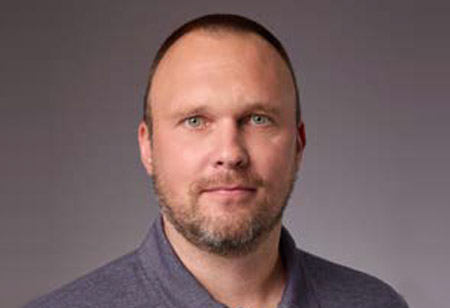Thank you for Subscribing to Construction Business Review Weekly Brief

Transforming Concrete Pouring with Innovative Formwork Solutions
Tadas Ciucky, the Director of Engineering at Doka, is a highly experienced engineering manager with a demonstrated history of working in the construction industry. He holds almost 20 years of professional experience with Doka and is immensely skilled in formwork design and management.
In an exclusive interview with Construction Business Review magazine, Ciuckys shares his valuable insights on addressing challenges in concrete pumping and the significance of strategic management in constructing remarkable structures.
What technological trends and challenges have you observed in the field of concrete pumping?
When it comes to concrete pumping, several challenges arise, including climate and temperature considerations. Contractors need to closely monitor the site and control the concrete temperature, especially in regions with extreme cold or scorching hot weather conditions. Additionally, urban areas pose unique challenges. Pouring massive volumes of concrete, often 24x7, in cities requires special permissions, as quiet areas may have restrictions on night-time pumping. Access to job sites presents another logistical hurdle in cities like NYC, where truck mobility requires road closures and city approvals.
Projects involving large concrete volumes necessitate uninterrupted pumping, often requiring multiple pumps and a continuous supply of concrete. Synchronizing the arrival of concrete trucks to avoid delays becomes critical to ensure a constant flow of concrete and maintain its desired characteristics. This challenge is particularly prominent in dense urban areas, where space limitations and traffic congestion can impact the efficiency of concrete pumping operations.
The Slip Form: A Notable Trend! The slip form is a significant trend in the industry, particularly for circular structures like wastewater tanks and digesters. Slip forms enable continuous pouring without interruptions, operating 24x7 until the structure reaches completion. However, ensuring a constant flow of concrete into the walls and managing vibration remain essential challenges in this nonstop concreting process.
Could you throw more light on how you provide solutions for these challenges and what kind of partnerships and checklists you follow?
At Doka, we strive to provide comprehensive solutions for every project by supplying various formwork systems tailored to specific requirements. We collaborate with steel fabricators to fabricate formwork components that are not readily available.
Furthermore, partnerships with external vibrator companies ensure the availability of suitable vibrators for different projects. We do not directly supply concrete, we consider concrete type, project location, and temperature requirements when providing the formwork solutions.
Can you walk us through any impactful projects or initiatives you’re currently working on?
We have been involved in several impactful projects across the United States. We supplied formwork for the Hudson Yards project, one of the largest projects completed in the past few years. We have also contributed to high-rise buildings in major cities like New York City, Chicago, and Seattle. The Obama Library is another prestigious project we were involved in. Additionally, we have undertaken civil projects, such as the C51 water dam in Florida and several other nuclear projects. Internationally, we have also successfully completed two large dams in Canada.
The construction industry can optimize concrete pumping
processes and deliver exceptional structures by staying abreast of technological advancements, addressing challenges through strategic management, and embracing emerging trends
How do you envision the future of concrete pumping in the construction industry?
A noticeable trend in the industry is the growing popularity of precast concrete. Precast concrete is considered more productive and faster, leading to shorter construction cycles. It also offers cost advantages compared to cast-in-place concrete. At the same time, this shift towards precast construction is advantageous in certain applications like low-rise buildings. But it does pose challenges for formwork suppliers like us, as our focus is primarily on supplying formwork for cast-in-place concrete. Despite potential market share loss, the industry’s trajectory toward precast construction is undeniable.
The construction industry can optimize concrete pumping processes, improve efficiency, and deliver exceptional structures by staying abreast of technological advancements, addressing challenges through strategic management, and embracing emerging trends.








